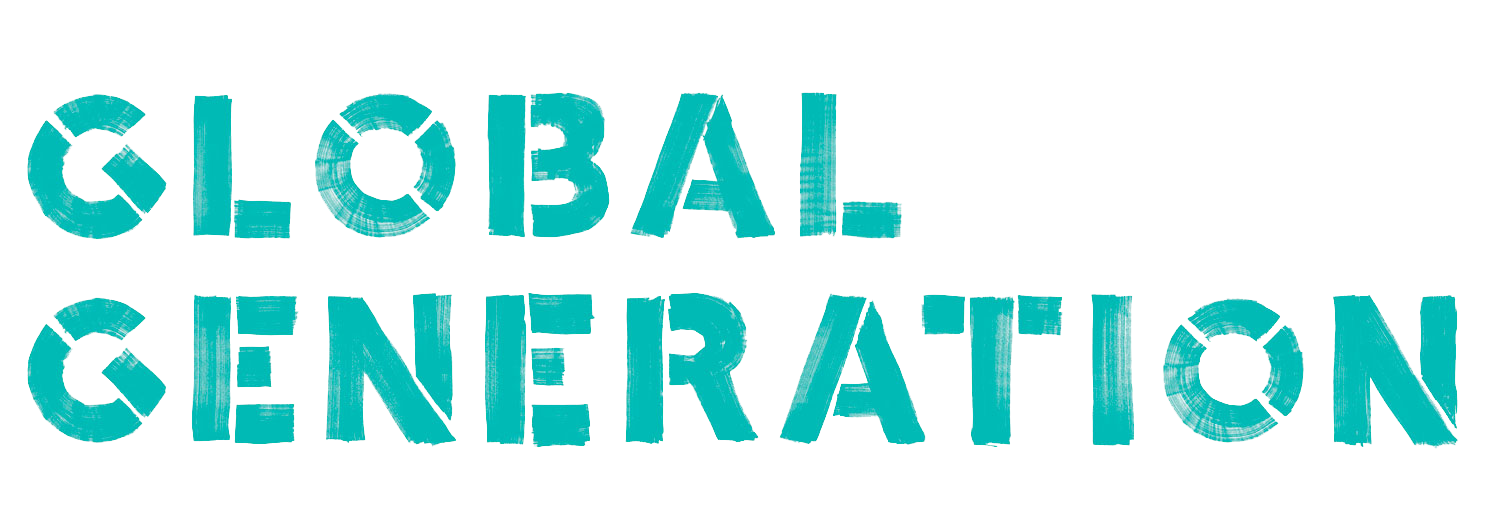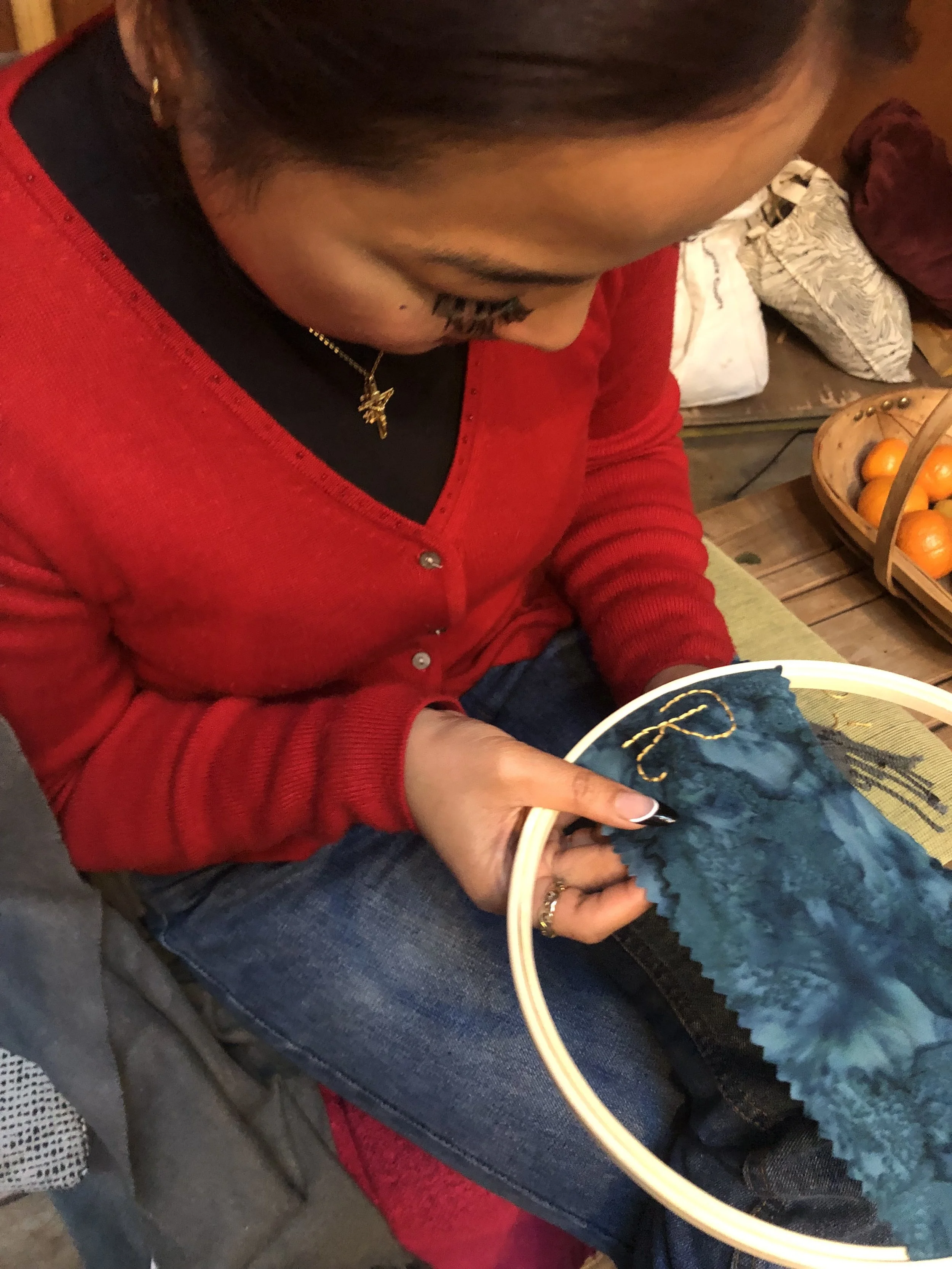from Scrap to Story: Recycling Paper with Purpose
As a way of honouring our Global Generation roots, The fellows and I, teamed up with Sogand Barham and used old notebook pages, drawings and scraps of paper, turning them into beautiful new pages for future Global Generation’s gatherings . The whole process took place over two days, starting with a question: what does it mean for me to be part of a bigger picture?
We’ve all grown up with the “Reduce, Reuse, Recycle” concept. At least I did. Reduce what you consume, reuse what you already have, and recycle…paper. I always associated ‘recycling’ with paper.
On the first day of the project, Sogand said something that stuck with me: “Sometimes you see shredded bits of paper in a bag on the side of the street or some paper boxes and rather then seeing waste you can see a resource ”.
I guess the term ‘one man’s trash, is another man’s treasure’ does apply well to this context.
But if you’re not into making paper, you question…why are there random pieces of shredded paper left on the side of the street? Are we aware of the impact we are making on the planet?”. It’s easy to say “it gets recycled”, but when I found out that, according to the UK Government, only about 44% of household waste is actually recycled, it broke my heart because the rest ends up in landfills, or worse, the ocean.
In the last summer school, partecipants explore the topic of water and stood up for the ocean’s creatures
As this blog wouldn’t be Cassie’s blog without a bit of research, let’s look at numbers. Recycling
Reduces Landfill Waste - Landfills fills up fast and the EPA (Environmental Protection Agency) claims that recycling 37% of created waste decreases landfill space by 63% .
It Saves energy - Recycling saves serious energy compared to making things from scratch. (According to the 2017 Global Foundation of Recycling study, percentages of energy saving are incredible. Recycling Aluminium for example save 94% of energy. You’re not just reducing waste - you’re reducing the power it takes to create more stuff)
Protects our Environment - Producing new products means extracting raw materials - which then get refined, processed, and pumped through systems that pollute our air and water. The whole cycle increases greenhouse gases and accelerates global warming.
That said - let’s not pretend recycling is perfect. Even making “recycled” materials still uses up natural resources. And no, just because we tossed 5lbs of single-use bottles into the recycling bin doesn’t mean they’re all off to live happily ever after as reusable goods. Some? All? Let’s just say... it’s complicated.
But the paper making project made us all reflect on how the way we use things can shape who we are. On the first day, the fellows split into different groups. Some wandered around the Story Garden, gathering herbs (like nettles and goosegrass), flowers and petals to add texture and scent to the pulp.
Calendula, daisy, buttercups, roses and phacelia flowers
Others took on shredding duty - tearing up pure white, red, and green paper to create the base colours of our sheets. A shredder is crucial for this process. The rest focused on organising sentimental pieces: small artworks, sketches, and little scraps that could be woven into the pages as personal touches.
Old sketches, cards, gift wraps and even medical papers
Once shredded, the paper was left to soak in water over the span of a week, giving it time to fully absorb the liquid. After softening, it was blended into a mushy, porridge-like consistency - the perfect base for our handmade sheets.
Using a mould and deckle (a wooden frame with a mesh screen), we submerged the frame into the pulp mixture, gave it a gentle wiggle, then lifted it out - letting the water drain while the pulp settled into a flat, even layer across the screen.
“It was great to get involved and learn a new creative skill for both personal and the wider community”
“Mixing, mushing, pressing, squeezing…trial and error, getting better, repeating…
Through this process, I can go on and on and grow”
We then hung the pages on J-cloths inside a marquee helping speeding up the drying process. Once each sheet was dry, we carefully lifted it by the edges, then pressed it flat between books to stop it from curling or crinkling
Stories on a washing line
To close the project, we sat in the Roundhouse looking back at our days together: I remember fellows words:
“Yes, there is chaos in renewal, but also peace”
“Making paper with my hands made me feel an activist - an art activist”
“Like this paper, you too can start anew - be reborn in a new location for a new purpose”
I really enjoyed the process of making paper. There’s so much creativity involved, and the touch of personalisation makes it feel that little bit more special. It was honestly zen and peaceful - and it gave me time to reflect. I found myself asking: Why am I doing this? Why does recycling matter so much?
As someone who tries to live an environmentally-friendly lifestyle, I often feel stuck between wanting to make a difference and keeping things budget-friendly. Sure, solar panels are great - but what about the people who can’t afford them? And protesting? Amazing, but not everyone feels confident enough to join, or even physically able to. I think when people hear eco-conscious, they assume it has to be something extreme - like completely changing your life. But it doesn’t. It could be a small thing like… making paper.
Taking care of the planet isn’t a one-size-fits-all action. What works for 27-year-old Janet next door might not work for 45-years-old single mum Maria down the street - and that’s okay. But if each of us puts in just a little effort, it adds up.
And here’s another thing: according to a 2020 survey, young adults aged 18 to 35 in the UK were reported to have 8.8 hours of screen time per day. Our paper-making session ran from morning to 4pm - and at the end of those hours, the sheets of paper were ready. In that time, I made something practical, did something productive, and tapped into a little bit of creativity, connecting with my colleagues and friends fellows in the garden, amongst plants. All of that wouldn’t have happened if I’d spent the day scrolling on TikTok, not even remembering what video I started with.
I get it. Sometimes it’s easier said than done. Sometimes our brains just need that dopamine scroll. But there’s also something really calming about sitting in silence and letting your mind wander. At one point, I found a piece of art I had drawn back when the Story Garden first opened. I was in sixth form at the time. The moment I saw it, I knew it was mine - the way I drew the oak trees, the colours I picked. I had almost forgotten what it felt like to first walk into that space.
In some ways, seeing the work of previous Generators reminded me of the path they carved - one that I’m now walking as a Fellow. The fact that I got to make paper using pieces of their past feels like the perfect ingredient for Global Generation’s future - permanent, rooted, and full of possibility.
References
Agunwamba JC. Analysis of Scavengers’ Activities and Recycling in some Cities. Environmental Management 2018;32(1):116-127
UK Government Waste Statistics 2022 (https://www.gov.uk/government/statistics/uk-waste-data)
US Environmental Protection Agency.“Advancing Sustainable Materials Management” reports :https://www.epa.gov/smm















Ever wondered how community building shapes the was we learn and share knowledge? Garden Trainee Betsey Maeve sheds light on what ‘implicit’ knowledge is, and how this learning model has shaped their journey at the Triangle Site.